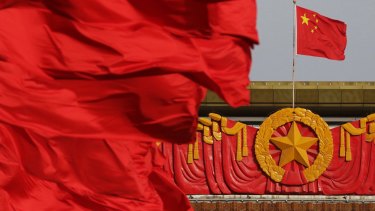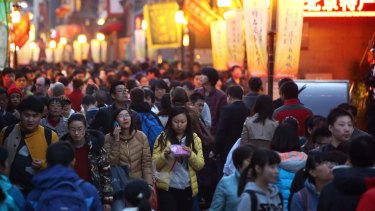Stephen Bartholomeusz

There has been a spate of Chinese companies defaulting on their bond repayments in the past few weeks, sending anxious ripples through the market that have even touched China’s sovereign bond yields and caused its central bank to pump liquidity into its bond market to try to calm it.
While there’s something of a focus of concern on the coal mining sector, which was hit hard by the impact of the coronavirus on demand, it isn’t confined to that sector.
On Monday chip maker Tsinghua Group (also known as Unigroup) – a state-backed entity controlled by Tsinghua University and regarded as one of the stars of Beijing’s push to reduce its reliance on imported semiconductors – defaulted on a 1.3 billion yuan ($270 million) bond redemption that was due that day.
Last week state-owned Yongcheng Coal & Electricity Holding Group was unable to repay a 1 billion yuan bond, which sent shudders through the entire sector, tanking bond prices, and triggered an investigation by the bond market regulator into its disclosures. Other coal companies cancelled planned bond issues or shrunk the size of their offerings.
Last month Brilliance Auto Group, which has ties to BMW, was unable to redeem a 1 billion yuan bond and one of China’s biggest, and most indebted, property companies, China Evergrande, was forced to sell a major asset to raise 14.9 billion yuan to avert a liquidity crunch.
Those defaults and stresses have raised questions about the state of China’s corporate sector and a question mark over the willingness and capacity of local governments, and the central government, to bail out troubled enterprises.
Chinese banks and investors are reducing their bond holdings for fear that there will be more defaults as non-performing loans hit record levels. Bond yields are spiking to reflect the increases in perceived risk.
Even China’s sovereign bonds have been impacted, with 10-year government bond yields reaching their highest levels in nearly 18 months.
The failure of Yongcheng and the inability or unwillingness of its provincial government to bail it out before it defaulted has raised a broader concern about a credit crisis.
There is a significant level of moral hazard in the relationship between state-owned companies and their local governments.
The companies and their investors expect the governments to step in to avert losses of jobs and economic activity and therefore run higher levels of leverage than might otherwise be the case. The defaults question that assumption and their capacity to sustain excessive leverage.
There have always been concerns about the levels of leverage in China’s corporate sector and within its local governments. China’s overall debt-to-GDP ratio is over 300 per cent and climbing.
During the trade war with the US and more recently the pandemic China’s central authorities reversed what had been an attempt to rein in the loose monetary policy and excess credit and leverage that was the legacy of its massive stimulus programs in response to the financial crisis in 2008.
They have been sending signals that they are considering another bout of tightening to withdraw the stimulus and incentives injected into the economy in response to the trade conflict and the pandemic, raising a question mark over the stability and solvency of a lot of state-owned or state-reliant enterprises if their local governments are unable to support them.
That long-held assumption was challenged last year when Baoshang Bank was allowed to collapse, the first bank failure in China almost 20 years.

China could end up being the only major economy to post positive growth this year.CREDIT:BLOOMBERG
The Yongcheng default raised particular concerns and had an impact beyond its size or Yongcheng’s own significance because it was unexpected.
The state-owned miner’s bonds were AAA-rated by domestic credit ratings agencies because of its state-owned status, the creditworthiness of Henan province and because it had appeared to be holding ample liquidity ahead of the default – hence the investigation by the market regulator.
Earlier this year Yongcheng’s parent company defaulted on its debt but was bailed out by the provincial government. With some cross-default provisions within the group the parent might be drawn into the new crisis.
There have always been concerns about the levels of leverage in China’s corporate sector and within its local governments. China’s overall debt-to-GDP ratio is over 300 per cent and climbing.
China had been attempting to address that and to clean up its more leveraged and less productive SOEs and crack down on its shadow banking sector in recent years but the trade war and pandemic forced it to abandon that effort while it tried to offset their economic impacts.
It loosened monetary policy in response to the pandemic, albeit not to the same degree to that which has occurred in most of the major developed economies.
While China’s growth rate has tumbled to a fraction of the six per cent or so it had been targeting before the pandemic struck – it is expected to generate something closer to two per cent this year – it is one of the few - perhaps the only – major economy likely to post positive growth this year.
It has the capacity to deal with a credit crisis, given its high national savings rate, but there is an underlying weakness and vulnerability in its local governments, the corporate sector and the state-owned enterprises in particular that complicate the central government’s ability to implement a tightening of monetary policy.

Baoshang Bank was allowed to collapse last year, the first bank failure in China almost 20 years. CREDIT:AP
China’s central bank, the People’s Bank of China, was forced to pump more than 800 billion yuan into the country’s financial system this week to try to settle the bond market and avoid the liquidity crunch that could occur if other companies were unable to access the market. It may also be trying to limit the extent to which the increase in yields raises the cost of borrowing for SOEs and local governments.
The PBOC would also be aware that, as has happened in other jurisdictions, China’s banks have provided interest and repayment deferrals until March next year, which might be disguising the extent of the problems within its corporate sector, particularly the state-owned sector and the local governments that support the SOEs.
China has dealt with credit crisis in the past and no doubt will do so again but the latest bout of instability and stress will complicate and delay its longer term goal of deleveraging its economy and normalising a monetary policy that has been expansive since 2008, leading to profligate and unproductive investment and rolling credit-related stresses.
No comments:
Post a Comment